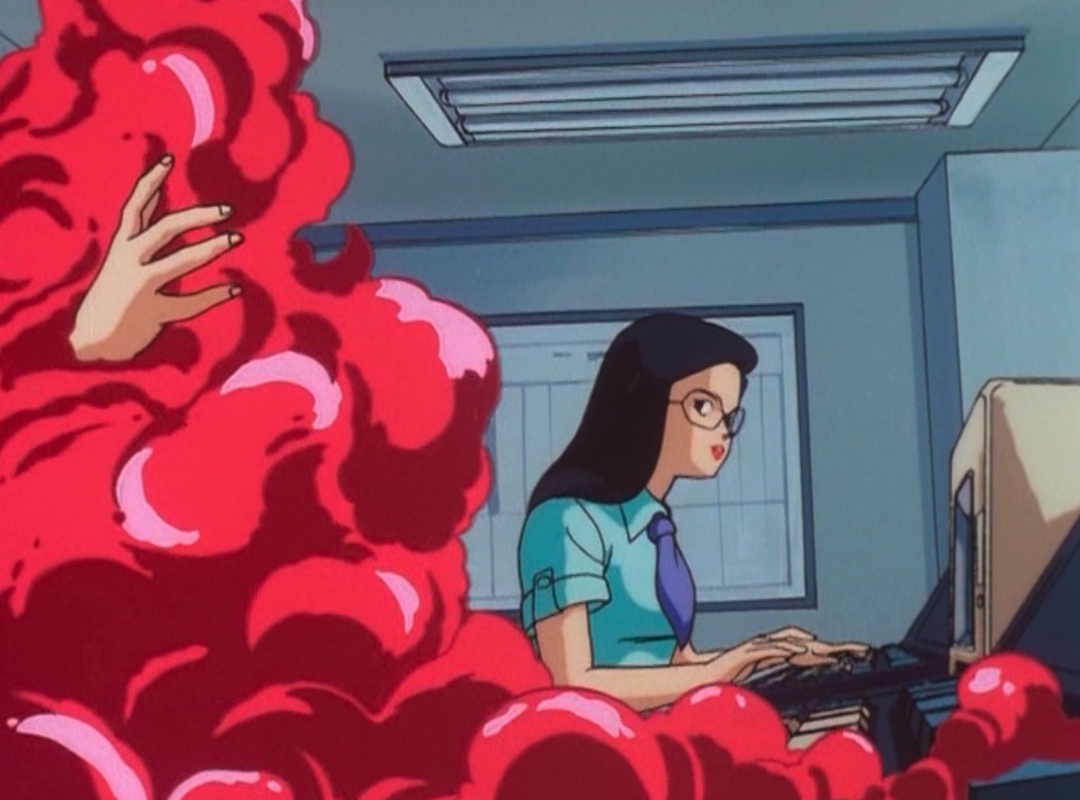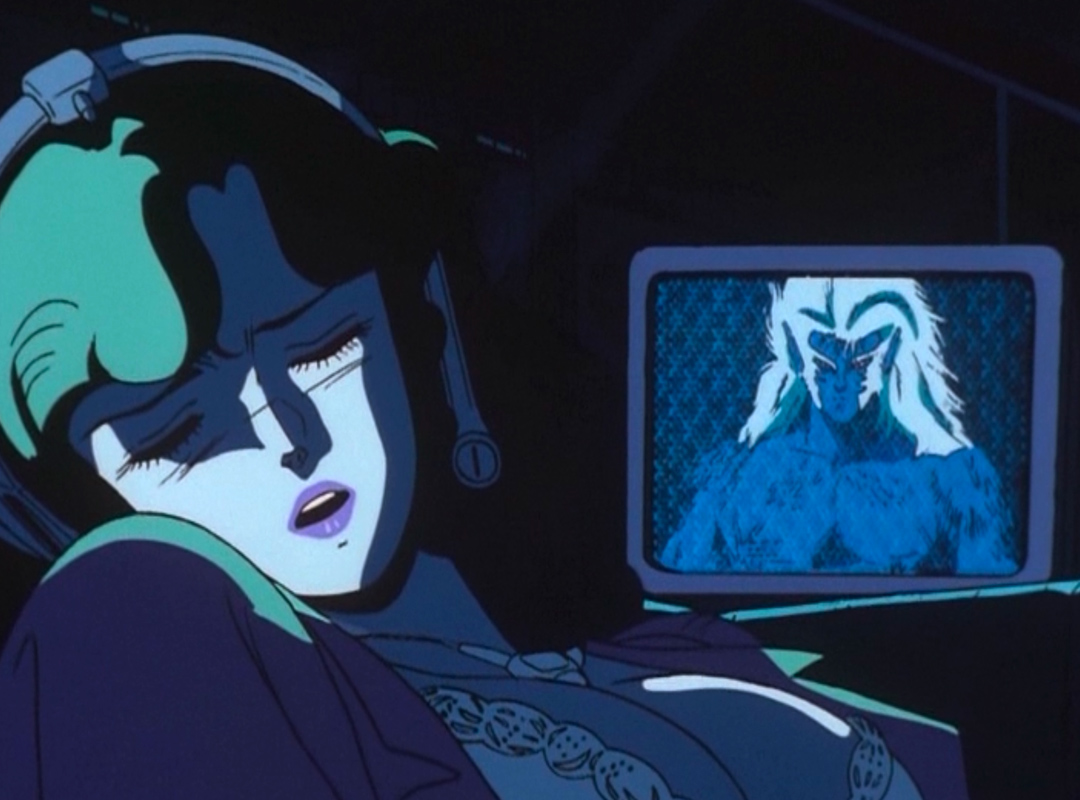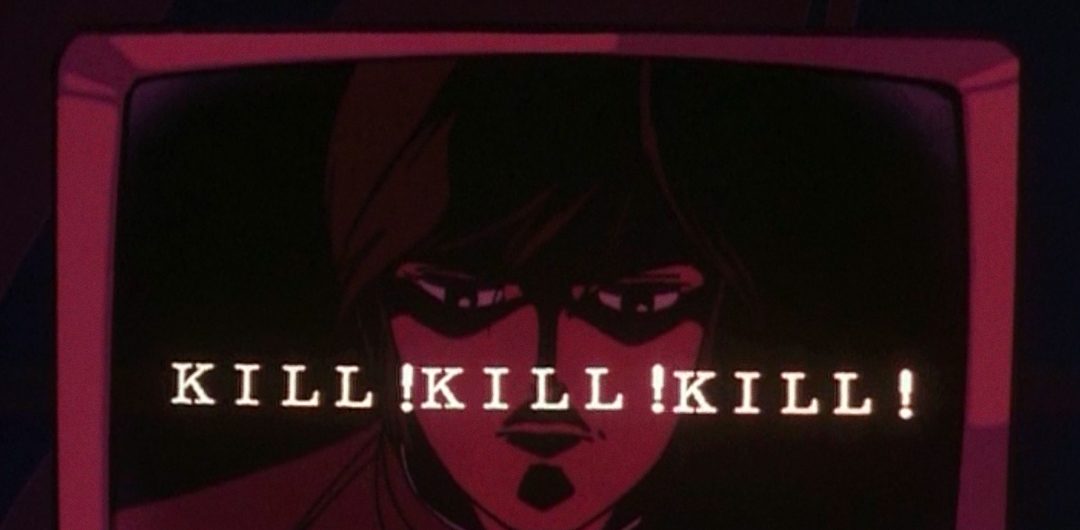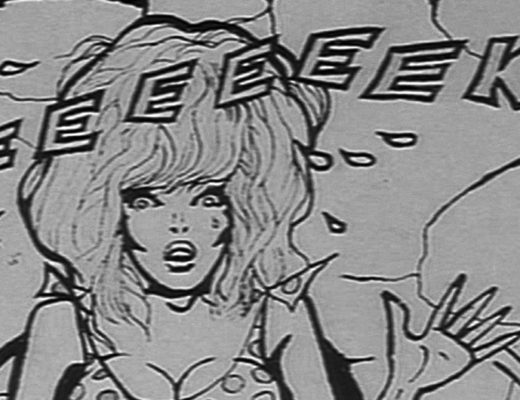Everyone remembers the first time that a personal computer changed their life. From obsessing over Minesweeper on Windows 3.1 to video chatting on an iMac G3, these moments are seared into our brains like weddings, funerals, and Anna Nicole Smith.
Sadly, no one’s memories of computers involve the invocation of a cybersexual Satanic demon named Loki. But at least we can live vicariously through Digital Devil Story: Megami Tensei.
Yumiko is a new student at Jussei Academy. She has a crush on Nakajima, the “bad boy” at school. In a refreshing change of pace, Nakajima isn’t into beer bongs or Ferraris—he’s a nerd who is obsessed with computers, particularly an adorable pocket computer that goes “bleep bloop bleep blop” when he types on it. With his teacher Ms. Ohara, Nakajima is conducting experiments in the computer room at school. It should be noted that this classroom is really a Satanic altar with a pentagram on the floor. Sounds like trouble! Loki is summoned in the school’s mainframe computer. He looks like a werewolf from Masters of the Universe and has cybersex with Ms. Ohara. Soon, Loki busts out of the zeros and ones and manifests in real-life as The Blob.
Things only get wilder from there.
Digital Devil Story: Megami Tensei is an original video animation (OVA) that somehow manages to compress everything I love about Satanic panic, X-Men comics, Dungeons & Dragons, and Lucio Fulci’s The Beyond into 45 minutes of nonsensical bliss. Despite its title, the movie isn’t concerned with telling an actual story. Instead, it’s a berserk hallucination—a series of escalating vignettes involving Nakajima and Yumiko’s battles with Loki. This is tech-horror anime that feels very much like it was adapted from a RPG video game that was adapted from three novels . . . because it was. But unlike the majority of obscure OVAs, Digital Devil Story didn’t put me to sleep. It’s jam-packed with visual elegance, outrageous violence, and sick synth-pop that sounds like Huey Lewis and the News as fronted by Goblin’s Claudio Simonetti. From the stylish transitions to the Homeric mythology, Digital Devil Story succeeds because it’s built on the element of surprise. I never knew where it was going. I never cared why. I was too busy waiting for Nakajima’s computer to scream “KILL! KILL! KILL!” again.
Digital Devil Story isn’t as affecting as The Curse of Kazuo Umezu or as gnarly as Call Me Tonight. But that doesn’t make it any less magical.






